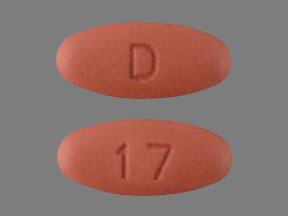Quinapril Side Effects
Medically reviewed by Drugs.com. Last updated on Mar 15, 2024.
Applies to quinapril: oral tablet.
Warning
Oral route (Tablet)
When pregnancy is detected, discontinue quinapril hydrochloride as soon as possible. Drugs that act directly on the renin-angiotensin system can cause injury and death to the developing fetus.
Serious side effects of Quinapril
Along with its needed effects, quinapril may cause some unwanted effects. Although not all of these side effects may occur, if they do occur they may need medical attention.
Check with your doctor immediately if any of the following side effects occur while taking quinapril:
Less common
- Blurred vision
- chest pain
- confusion
- diarrhea
- difficult or labored breathing
- dizziness, faintness, or lightheadedness when getting up suddenly from a lying or sitting position
- nausea
- stomach pain
- sweating
- tightness in the chest
- unusual tiredness or weakness
- vomiting
Rare
- Bleeding gums
- cold, clammy skin
- enlarged pupils
- fast or slow heartbeat
- increased sensitivity of the skin or eyes to sunlight
- stiff or sore neck
Other side effects of Quinapril
Some side effects of quinapril may occur that usually do not need medical attention. These side effects may go away during treatment as your body adjusts to the medicine. Also, your health care professional may be able to tell you about ways to prevent or reduce some of these side effects.
Check with your health care professional if any of the following side effects continue or are bothersome or if you have any questions about them:
More common
- Headache
Less common
- Back pain
- coughing
- difficulty with moving
- joint pain
- muscle aching or cramping
- muscle pains or stiffness
- rash
- swollen joints
For Healthcare Professionals
Applies to quinapril: oral tablet.
General
The most commonly reported side effects were dizziness, increased serum creatinine, increased blood urea nitrogen, cough, dyspnea, nausea, vomiting, and diarrhea.[Ref]
Cardiovascular
Uncommon (0.1% to 1%): Chest pain, hypotension, palpitations, vasodilation, tachycardia, heart failure, myocardial infarction, hypertensive crisis, angina pectoris, orthostatic hypotension, cardiac rhythm disturbances, cardiogenic shock[Ref]
Renal
Common (1% to 10%): Increased serum creatinine, increased blood urea nitrogen
Uncommon (0.1% to 1%): Urinary tract infection, acute renal failure/dysfunction, worsening renal failure, proteinuria
Frequency not reported: Increases in blood urea nitrogen and serum creatinine[Ref]
Metabolic
Uncommon (0.1% to 1%): Hyperkalemia, hyponatremia[Ref]
Hematologic
Uncommon (0.1% to 1%): Hemolytic anemia, agranulocytosis, thrombocytopenia
Frequency not reported: Neutropenia, decreased hemoglobin, decreased hematocrit[Ref]
Hypersensitivity
Uncommon (0.1% to 1%): Angioedema of the head, neck, face, extremities, lips, tongue, glottis and/or larynx, intestines; anaphylactoid reactions[Ref]
Hepatic
Uncommon (0.1% to 1%): Abnormal liver function tests, hepatitis
Rare (less than 0.1%): Hepatic failure (characterized by cholestatic jaundice with progression to fulminant hepatic necrosis and sometimes death)
Frequency not reported: Cholestatic icterus[Ref]
Nervous system
Common (1% to 10%): Dizziness
Uncommon (0.1% to 1%): Headache, cerebrovascular accident/cerebral hemorrhage, somnolence, vertigo, syncope, nervousness, paresthesia, transient ischemic attacks, tinnitus
Rare (less than 0.1%): Balance disorder[Ref]
Gastrointestinal
Common (1% to 10%): Nausea, vomiting, diarrhea, dyspepsia, abdominal pain
Uncommon (0.1% to 1%): Flatulence, dry mouth or throat, constipation, gastrointestinal hemorrhage, pancreatitis
Rare (less than 0.1%): Glossitis
Very rare (less than 0.01%): Ileus[Ref]
Respiratory
Common (1% to 10%): Cough, pharyngitis, dyspnea, rhinitis
Uncommon (0.1% to 1%): Eosinophilic pneumonitis, sinusitis, upper respiratory tract infection, bronchitis
Frequency not reported: Bronchospasm[Ref]
Musculoskeletal
Uncommon (0.1% to 1%): Myalgia, back pain, arthralgia
Genitourinary
Uncommon (0.1% to 1%): Impotence[Ref]
Psychiatric
Uncommon (0.1% to 1%): Depression, insomnia, confusion[Ref]
Other
Common (1% to 10%): Fatigue, asthenia
Uncommon (0.1% to 1%): Fever, malaise, generalized/peripheral edema[Ref]
Immunologic
Uncommon (0.1% to 1%): Viral infection[Ref]
Dermatologic
Uncommon (0.1% to 1%): Rash, alopecia, increased sweating, pemphigus, pruritus, exfoliative dermatitis, photosensitivity reaction, dermatopolymyositis
Rare (less than 0.1%): Urticaria, erythema multiforme, pemphigus
Very rare (less than 0.01%): Psoriasis-like efflorescence
Frequency not reported: Stevens Johnson syndrome, epidermal necrolysis[Ref]
Ocular
Uncommon (0.1% to 1): Amblyopia
Very rare (less than 0.01%): Blurred vision[Ref]
Frequently asked questions
More about quinapril
- Check interactions
- Compare alternatives
- Pricing & coupons
- Reviews (11)
- Drug images
- Latest FDA alerts (2)
- Dosage information
- During pregnancy
- Drug class: Angiotensin Converting Enzyme Inhibitors
- Breastfeeding
- En español
Patient resources
Other brands
Professional resources
Other brands
Related treatment guides
References
1. Product Information. Accupril (quinapril). Parke-Davis. 2001;PROD.
2. Cerner Multum, Inc. UK Summary of Product Characteristics.
3. Cerner Multum, Inc. Australian Product Information.
Further information
Always consult your healthcare provider to ensure the information displayed on this page applies to your personal circumstances.
Some side effects may not be reported. You may report them to the FDA.

